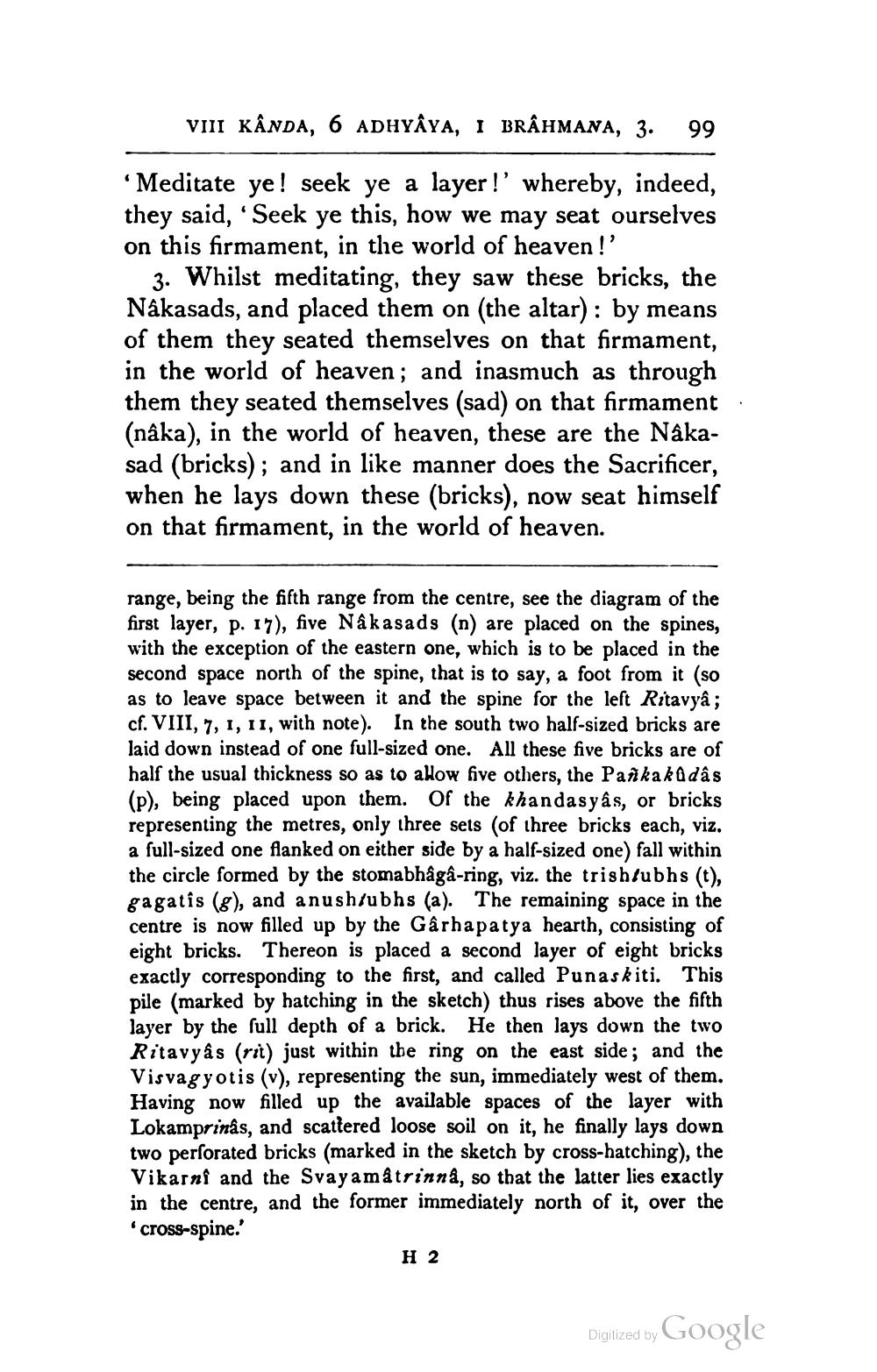________________
VIII KANDA, 6 ADHYAYA, I BRAHMANA, 3. 99
'Meditate ye! seek ye a layer!' whereby, indeed, they said, 'Seek ye this, how we may seat ourselves on this firmament, in the world of heaven!'
3. Whilst meditating, they saw these bricks, the Nâkasads, and placed them on (the altar): by means of them they seated themselves on that firmament, in the world of heaven; and inasmuch as through them they seated themselves (sad) on that firmament (nâka), in the world of heaven, these are the Nâkasad (bricks); and in like manner does the Sacrificer, when he lays down these (bricks), now seat himself on that firmament, in the world of heaven.
range, being the fifth range from the centre, see the diagram of the first layer, p. 17), five Nâkasads (n) are placed on the spines, with the exception of the eastern one, which is to be placed in the second space north of the spine, that is to say, a foot from it (so as to leave space between it and the spine for the left Ritavyâ; cf. VIII, 7, 1, 11, with note). In the south two half-sized bricks are laid down instead of one full-sized one. All these five bricks are of half the usual thickness so as to allow five others, the Pankakâdâs (p), being placed upon them. Of the khandasyâs, or bricks representing the metres, only three sets (of three bricks each, viz. a full-sized one flanked on either side by a half-sized one) fall within the circle formed by the stomabhâgâ-ring, viz. the trish/ubhs (t), gagatis (g), and anush/ubhs (a). The remaining space in the centre is now filled up by the Gârhapatya hearth, consisting of eight bricks. Thereon is placed a second layer of eight bricks exactly corresponding to the first, and called Punaskiti. This pile (marked by hatching in the sketch) thus rises above the fifth layer by the full depth of a brick. He then lays down the two Ritavyâs (rit) just within the ring on the east side; and the Visvagyotis (v), representing the sun, immediately west of them. Having now filled up the available spaces of the layer with Lokamprinâs, and scattered loose soil on it, he finally lays down two perforated bricks (marked in the sketch by cross-hatching), the Vikarni and the Svayamâtrinnâ, so that the latter lies exactly in the centre, and the former immediately north of it, over the 'cross-spine.'
H 2
Digitized by
Google




